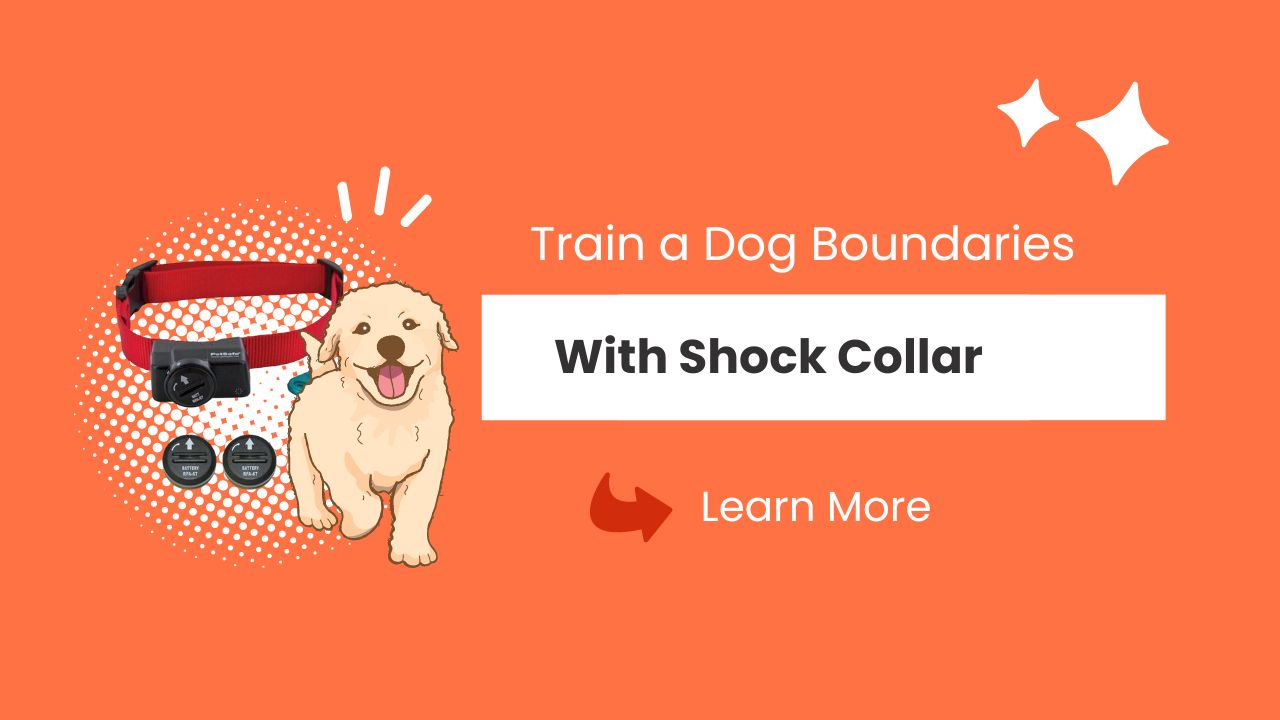Training a dog to understand and respect boundaries is a crucial aspect of responsible pet ownership that enhances both the pet’s safety and its integration into human environments.
Among the various tools available for this purpose, shock collars have gained attention for their potential effectiveness when used appropriately and ethically.
When considering the topic of How To Train a Dog Boundaries With Shock Collar, it is essential to delve into the topic of understanding shock collar and boundaries, So lets discuss in details.
Understanding Shock Collar ?
A shock collar device used with dogs to remotely deliver an electric stimulus to the dog’s neck in order to modify its behavior. A receiver unit is often attached to a collar that the dog wears around its neck.
Electronic components in the receiver unit allow it to provide the dog with different amounts of static electric stimulation. Shock collars are frequently utilized for training, especially when more conventional training methods may not be as effective.
What is a Dog Boundaries
If your dog strays outside the boundaries, they receive a short shock or vibration that tells them to stop and stay in its safe area. Shock collars are frequently used to curb undesirable behaviors. Although we adore dogs, they sometimes develop harmful tendencies.
The method used by shock collars, which are frequently used to train dogs, sends a signal to the dog to stop and stay inside its allocated safe region if it crosses any predetermined boundaries.
Shock collars are frequently used to stop dogs from acting out in unpleasant ways in addition to for containment.
Despite our undying love for dogs, it’s crucial to recognize that they occasionally pick up undesirable habits.
These collars can be used as a preventative measure against behaviors including excessive barking, digging, and jumping on furniture.
Their efficacy depends on appropriate training methods and the temperament of each individual dog, therefore it’s crucial to employ them with caution and sensitivity.
Maintaining a healthy coexistence that fosters both their happiness and our shared bond requires striking a balance between training our furry friends and ensuring their well-being.

How To Train a Dog Boundaries With Shock Collar?
To train a dog boundary using a shock collar, you typically follow these steps:
1. Determine the specific area you wish to set aside as the dog’s territory. This might be your garden, yard, or any other area that you want the dog to remain in.
2. Allow your dog to become accustomed to the flags or markers you’ll use to define the boundaries of the property.
3. Positive reinforcement should be used to start the dog’s training. Give the dog verbal cues or directions to encourage them to stay inside when they get close to the border. When the dog responds correctly, praise and goodies should be given.
4. Put the dog’s shock collar on and adjust the vibration or shock intensity to the lowest setting. Without connecting the collar with the shock, let the dog get used to wearing it.
5. Encourage your dog to link breaching the border with the shock or vibration over the course of several training sessions. To tell children to stay in the secure area, use verbal orders and cues.
6. As your dog gains knowledge, you may gradually lessen the positive reinforcement and rely more on the negative stimulus provided by the collar to discourage boundary violations.
7. Start off by keeping a tight eye on your dog while they are within the boundaries. The collar will assist reinforce the boundaries if they try to cross.
Some Different Shock Collars Are ?
- Static Shock Collars: When actuated by a remote control, these collars shock the dog’s neck with electricity. There are frequently several levels of adjustment for the shock intensity. These collars are frequently worn for training purposes, however they may harm the dog physically and psychologically..
- Spray Collars: When the dog exhibits undesirable behavior, these collars unleash a blast of citronella or similar pungent aroma instead of an electric shock. The idea is that the dog will discontinue the behavior because it will associate the fragrance with it. The consensus is that this kind of collar is less dangerous than static shock collars.
- Vibration Collars: The dog’s neck is vibrated with vibrating collars to catch their attention or stop particular behaviors. These collars can be used as a communication tool and are normally less harsh than static shock collars.
- Ultrasonic Collars: Although typically inaudible to humans, the ultrasonic sound that these collars create is unpleasant to dogs.The purpose of the noise is to distract the dog from bad behavior. Their effectiveness can vary, though, and some dogs may gradually get used to the noise.
- Combination Collars: Some collars have the potential to vibrate, shock, or spray, for example. Giving someone a range of options is intended to help them change their behaviors.
Conclusion
As in final conclusion for How To Train a Dog Boundaries With Shock Collar, the use of shock collars as a tool for teaching dogs to recognise and respect boundaries is a complicated and divisive topic in the world of responsible pet keeping.
When used intelligently and ethically, shock collars can be beneficial, but they should only be used as a last resort.
It is crucial to put the dog’s comfort and well-being first and to take a balanced approach that includes humane training techniques.
Results can be improved by carefully choosing a shock collar that fits the dog’s size, temperament, and demands as well as by committing to positive reinforcement and gradual training methods.

